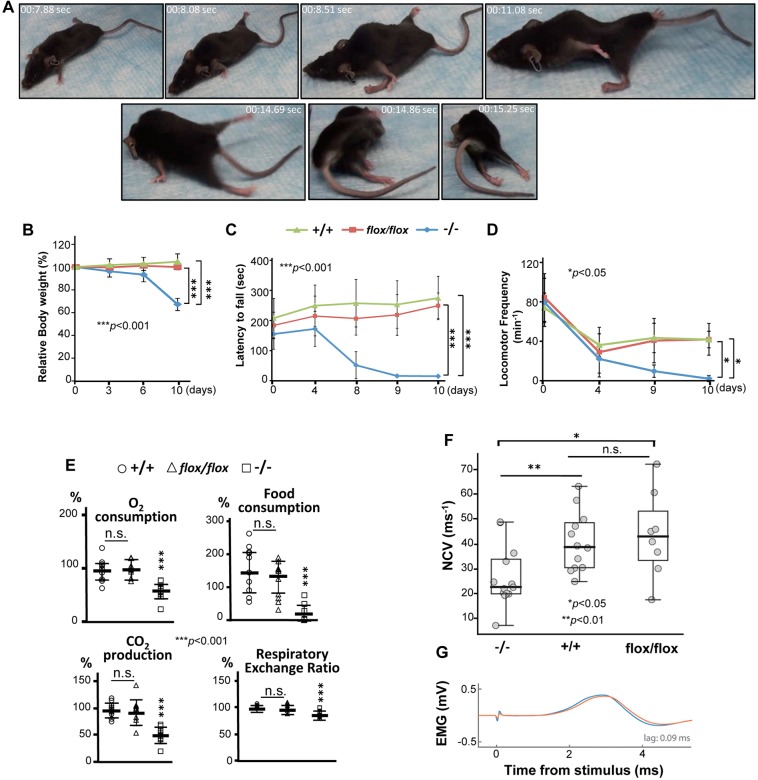Fig. 2.
Decline of motor and metabolic activities of SLICK-H::Ranbp2flox/flox mice. (A) Still frames of digital video of locomotor behavior of SLICK-H::Ranbp2flox/flox (−/−) mice at day 9 post-tamoxifen administration (see also Movie 1). −/− mice develop hind limb paralysis, gait impairment, lack of motor balance and hypoactivity. (B) −/− mice show progressive loss of body weight. (C) Rotarod tests showing strong and progressive loss of motor coordination and balance of −/− mice. (D) Open-field tests showing strong motor hypoactivity of −/− mice at days 9 and 10 post-tamoxifen administration. For behavioral tests (B-D), two-way RMANOVA revealed a significant effect of genotype, *P<0.05, ***P<0.001, n=8-10 mice/genotype. Data are expressed as mean±s.d. (E) Oxygen consumption, carbon dioxide production, respiratory exchange ratio and food consumption significantly decline in −/− mice at day 9 post-tamoxifen administration. ***P<0.001, one-way ANOVA, n=10 mice/genotype. Data are expressed as mean±s.d. (F) Dot-box plots of sciatic nerve conduction velocity (NCV) adjusted to body temperature. NCV is decreased in −/− mice at day 9 post-tamoxifen administration. Box-plot edges mark the 25th and 75th percentiles of the data, and the centerline shows the median value. **P<0.01, *P<0.05, Kruskal–Wallis test rejected the null hypothesis at P=0.014, n=8-13 mice/genotype. (G) Representative example of stimulation-evoked electromyography (EMG). The plot shows evoked EMG responses from stimulating the sciatic nerve of a −/− mouse with the electrode nearest to (blue) and farthest from (red) the muscle, and the time lag for which the cross-correlation between the response pair was the largest. Day 0 (d0) is the day after the last dose of a daily 5-day regimen of tamoxifen or vehicle (corn oil) administration; −/−, tamoxifen-treated SLICK-H::Ranbp2flox/flox; flox/flox, vehicle (corn oil)-treated SLICK-H::Ranbp2flox/flox; +/+, tamoxifen-treated SLICK-H::Ranbp2+/+.

